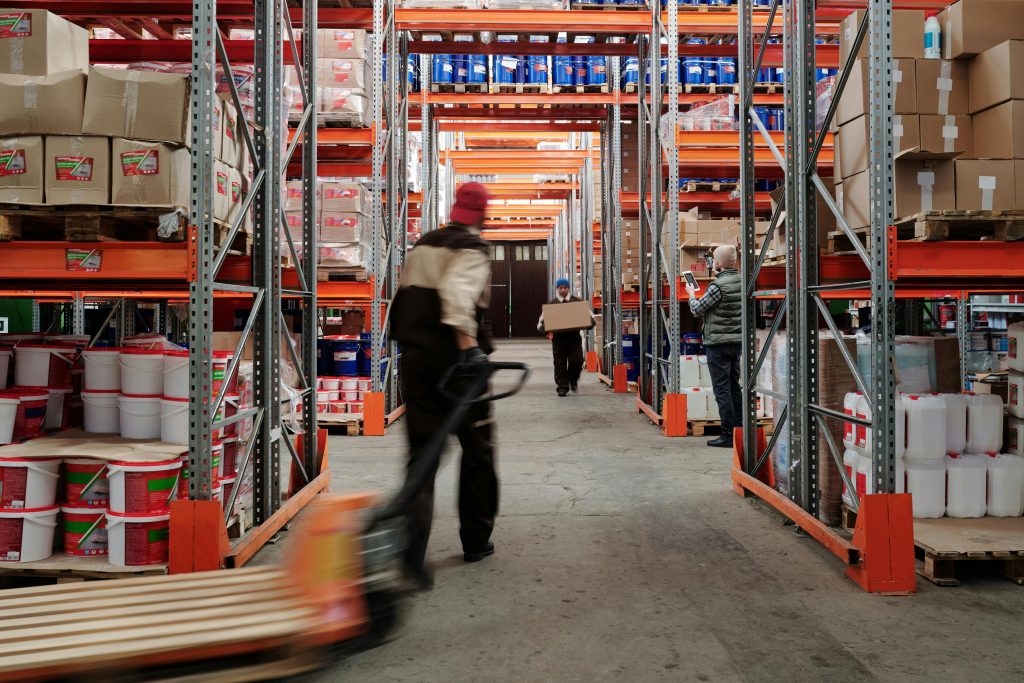The New Reality of Multi-Location Inventory
There’s a good chance your business lives under more than one “roof”. You might store finished goods at a warehouse, raw materials at a satellite location, and still run an online storefront that ships nationwide.
That’s where the real challenge begins: keeping your inventory data synchronized across every location and channel. Without real-time inventory visibility, even well-organized businesses run into problems:
- Duplicate orders when stock isn’t updated fast enough
- Overstocking one warehouse while another runs dry
- Customer service delays while staff confirm availability
- Missed sales because “in stock” items turn out not to be
When you take it all in, your lack of visibility costs time, money, and trust. But the good news is that modern cloud inventory systems have made multi-location visibility more achievable than ever.
Why Real-Time Visibility Matters
Real-time inventory visibility means having accurate, up-to-the-minute data on what’s in stock, what’s committed, and what’s inbound. It’s the difference between guessing and knowing.
Here’s what true real-time visibility delivers:
- Instant Accuracy: As orders come in, quantities adjust automatically—across all channels.
- Smarter Purchasing: Reorder points can be triggered automatically based on current stock levels and demand trends.
- Operational Speed: Staff at each location can see the same live data, reducing communication delays.
- Customer Confidence: Your storefronts, reps, and support teams can promise accurate lead times and delivery estimates.
The result? A more synchronized business that runs smoother and scales faster.

How Leading Platforms Handle Multi-Location
Let’s look at how some of the most popular cloud inventory systems—Katana and Fishbowl—help businesses manage visibility.
Katana Cloud Inventory
Katana is designed for product-based SMBs that sell both D2C and B2B. It offers live stock visibility across all locations, automatically adjusting availability as materials are received, consumed, or sold.
Katana’s real-time master planning connects purchasing, production, and sales, giving businesses a clear picture of what’s available and what’s already committed.
For teams with multiple warehouses or retail locations, Katana’s multi-location tracking keeps stock levels accurate, even as inventory moves between sites. Still, many Katana users enhance their setup with additional tools to improve external visibility—especially for B2B ordering, ecommerce integration, and customer-specific pricing portals.
Fishbowl Inventory
Fishbowl has long been a go-to for manufacturers and distributors looking to control complex warehouse environments. Its multi-location features allow businesses to assign inventory to multiple warehouses, bins, and sub-locations.
Fishbowl also supports part tracking, batch control, and custom reorder levels for each site.
When Fishbowl doesn’t cover the whole picture, businesses can turn to third-party connectors to bridge the gap between inventory, ecommerce, and accounting systems.
That’s where tools like LilyPad’s come into play—helping Fishbowl users bring data together in real time and improve how stock and orders flow between platforms.
The Gaps That Still Exist
Even with strong inventory software, businesses face a few persistent challenges:
- Disconnected Sales Channels – A sale in one channel doesn’t always update another fast enough.
- Limited B2B Functionality – Wholesale buyers often need logins, custom pricing, and real-time availability.
- Manual Order Entry – Staff still copy-paste orders from emails or marketplaces into the system.
- Ecommerce Fragmentation – Shopify, Amazon, and wholesale portals often live in separate ecosystems.
To achieve true end-to-end visibility, your inventory platform needs to communicate perfectly with all your other systems.That’s where third-party integrations become the secret ingredient.

Third-Party Solutions That Unlock Real-Time Visibility
Real-time visibility isn’t just about tracking—it’s about connection. Here are some solutions that extend the power of your existing inventory platform:
1. LilyPad Vortex — Centralized B2B and Ecommerce Portal
Even if your main system tracks inventory accurately, your customers and sales reps still need a way to see it.
LilyPad Vortex provides a customizable online portal that connects directly to your inventory platform’s existing database, meaning you are up and running in no time.
Buyers can log in, view real-time stock availability, browse only the products they’re allowed to purchase, and place orders 24/7—all synced back to your main inventory.
This bridge eliminates the lag between your warehouse and your customers, making sure your portal always reflects what’s truly available.
2. LilyPad Multi-Cart — One Dashboard for All Channels
Managing multiple storefronts and marketplaces? LilyPad Multi-Cart brings all of them into a single hub.
It connects your ecommerce platforms—like Shopify, Amazon, WooCommerce, or BigCommerce—with your inventory software.The result is real-time order and inventory sync across every channel you sell on.
Instead of manually updating each marketplace or risking overselling, Multi-Cart automates it all—so you can focus on growth, not reconciliation.
This makes Multi-Cart especially valuable for businesses running multi-location fulfillment or hybrid D2C + B2B operations.
3. Barcode Scanning & Mobile WMS Add-Ons
Mobile warehouse apps—whether native or connected through third-party systems—push visibility to the warehouse floor.
By scanning barcodes during receiving, putaway, and picking, you create live feedback loops between operations and your inventory database. This is especially effective when paired with LilyPad’s mobile-ready WMS.
Best Practices for Multi-Location Visibility
- Unify Your Systems
Choose inventory software that integrates natively with your ecommerce and accounting platforms. Then, use tools like Vortex or Multi-Cart to connect the rest. - Adopt Real-Time Sync Everywhere
Any manual process introduces lag. Automate updates between locations, marketplaces, and portals to keep data consistent. - Use a Single Source of Truth
Decide which system “owns” the data (often your inventory software) and ensure all others reference it. - Track Inventory Movement, Not Just Levels
Use transfers, batch tracking, and location histories to see how and why stock moves between warehouses. - Give Everyone Visibility
From sales reps to warehouse staff, ensure everyone can access up-to-date data. When teams share a single view of inventory, mistakes drop dramatically.
The Payoff: A Business That Runs in Sync
When every system speaks the same language, operations move faster and customers notice the difference:
- Orders ship sooner because stock is always accurate.
- Purchasing teams reorder smarter and avoid waste.
- Sales reps quote with confidence.
- Customers trust that “in stock” really means in stock.
Platforms like Katana and Fishbowl give you the foundation for real-time visibility. Integrations like LilyPad Vortex and Multi-Cart complete the picture, connecting your ecommerce, wholesale, and warehouse workflows into one seamless ecosystem.
The result isn’t just better inventory control—it’s a smarter, more connected business that grows without losing track of what makes it work.

